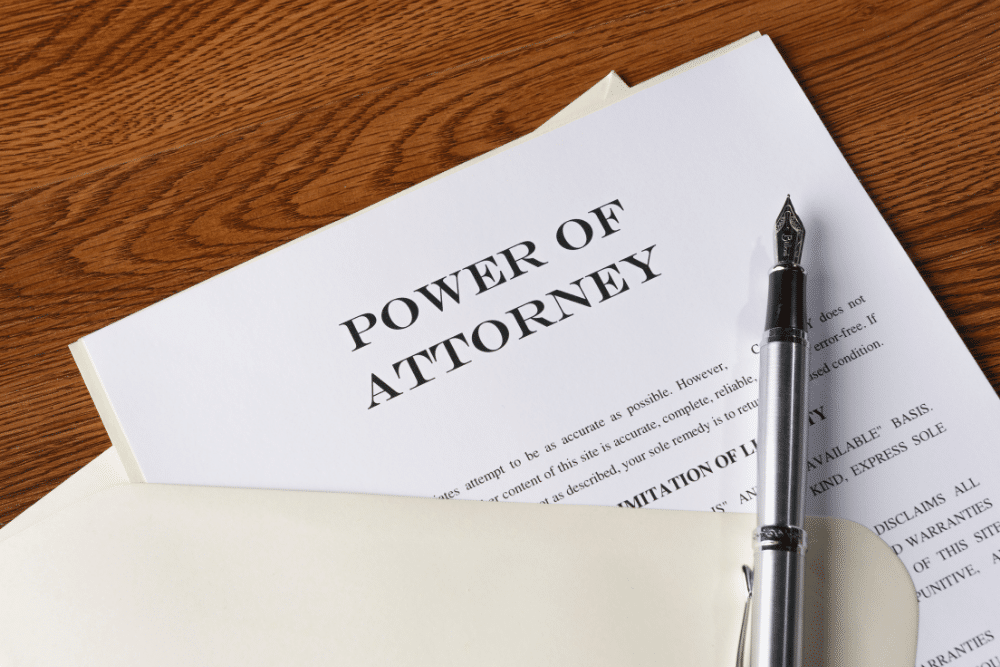A power of attorney (POA) is a legal document that gives one person (the agent) the authority to act on behalf of another person (the principal). This can be useful in a variety of situations, such as when the principal is unable to make decisions for themselves due to illness or incapacity, or when the principal is simply not able to be present to sign documents or conduct other business. The power of attorney allows the agent to make decisions and take actions on behalf of the principal, which can be especially helpful in times of need.
There are many different types of POAs, each with its own specific purpose. Some of the most common types of POAs include:
- General POA: This type of POA gives the agent broad authority to act on behalf of the principal in all matters.
- Limited POA: This type of POA gives the agent limited authority to act on behalf of the principal in specific matters. For example, a limited POA could give the agent the authority to manage the principal’s finances or to sell the principal’s property.
- Durable POA: This type of POA remains in effect even if the principal becomes incapacitated.
- Springing POA: This type of POA only becomes effective if the principal becomes incapacitated.
When creating a POA, it is important to carefully consider who you want to appoint as your agent. The agent should be someone you trust to act in your best interests. You should also make sure that the POA is properly drafted to ensure that it will be effective in the event that it is needed. Once you have created a POA, you should keep it in a safe place.
Types of POA Authorization Letters

There are many reasons why someone may choose to create a POA, and each situation may require a different type of POA. While there are general templates available for creating POA authorization letters, it is important to understand the different types of POAs and their specific purposes. Here are six common types of POA authorization letters and when they may be needed.
1. Medical POA
A medical power of attorney (MPOA) is a type of POA that gives an agent the authority to make medical decisions on behalf of the principal if they are unable to do so themselves. This can happen in situations where the principal is incapacitated or unable to communicate their wishes.
A medical POA is essential for anyone who wants to ensure that their health care decisions will be made according to their preferences. It is also helpful for elderly individuals who may need assistance with managing their medical care and treatment plans.
To create a medical POA, the principal should choose an agent who understands their values and beliefs regarding medical treatment. They should also discuss their wishes with the chosen agent and provide them with any necessary information, such as a living will or advance directive. This will help the agent make informed decisions on the principal’s behalf.
2. Financial POA
A financial power of attorney (FPOA) is a type of POA that gives an agent the authority to manage the principal’s financial affairs. This can include tasks such as paying bills, managing investments, and handling real estate transactions.
A financial POA is useful for situations where the principal is unable to handle their finances due to illness or absence. It is also helpful for aging individuals who may need assistance with managing their finances.
When creating a financial POA, the principal should choose an agent who is responsible and trustworthy. The agent should have a good understanding of the principal’s financial situation and be able to make sound decisions on their behalf.
3. Limited POA
A limited power of attorney is a type of POA that restricts the agent’s authority to specific tasks or decisions. This can be useful when the principal only needs the agent’s assistance for certain matters.
For example, a limited POA could give the agent the authority to sell a specific property on behalf of the principal. This type of POA is often used in real estate transactions or business deals where the principal is unable to be present to sign documents.
When creating a limited POA, it is important to clearly define the scope of the agent’s authority and specify the tasks or decisions they are authorized to make. The principal should also consider appointing a backup agent in case the primary agent is unable to fulfill their duties.
4. General POA
A general power of attorney is a type of POA that gives the agent broad authority to act on behalf of the principal in all financial and legal matters. This can include managing finances, signing documents, and making legal decisions.
A general POA can be useful in situations where the principal may not be able to handle their own affairs for an extended period of time, such as during a long-term illness or military deployment. It is also helpful for individuals who may need ongoing assistance with managing their affairs due to physical or mental limitations.
When creating a general POA, the principal should carefully consider the agent they appoint and ensure that they have full trust in their decision-making abilities. They should also clearly define the scope of the agent’s authority and specify any limitations or restrictions.
5. Durable POA
A durable power of attorney is a type of POA that remains in effect even if the principal becomes incapacitated or unable to make decisions for themselves. This is different from other types of POAs, which typically terminate if the principal becomes incapacitated.
A durable POA can be either general or limited in scope, depending on the principal’s preferences. It is important to note that a durable POA does not grant the agent the authority to make healthcare decisions on behalf of the principal. For that, a separate medical POA is required.
To create a durable POA, the principal should clearly state that they want the POA to remain in effect even if they become incapacitated. This ensures that their designated agent will continue to have the authority to act on their behalf in any situation.
6. Springing POA
A springing power of attorney is a type of POA that only becomes effective when a specific event or condition occurs. Typically, this event or condition is the incapacitation of the principal.
A springing POA can be either general or limited in scope, depending on the principal’s preferences. It is important to specify the triggering event or condition in the POA document so that there is no confusion about when the agent’s authority begins.
When creating a springing POA, the principal should carefully consider what event or condition will trigger the agent’s authority and ensure that it is clearly stated in the document. They should also discuss their wishes with the chosen agent beforehand and provide them with any necessary information or instructions.
How to Create a POA Authorization Letter

Creating a POA authorization letter is an important step in ensuring that your affairs will be taken care of in the event that you are unable to do so yourself. While there are general templates available, it is important to understand the specific requirements and considerations for each type of POA.
Here are the basic steps you should follow to create a valid and effective POA authorization letter:
- Determine the type of POA you need: Consider your specific situation and needs to determine which type of POA is most suitable. You may want to consult with an attorney to ensure that you choose the right type of POA and that it is properly drafted.
- Choose your agent: The agent you choose should be someone you trust to act in your best interests. They should also have the necessary capabilities to handle the responsibilities you are giving them.
- Create and sign the POA document: You can use a template or draft your own POA document, but it is important to ensure that it meets all legal requirements for your state or country. You may want to consult with an attorney to ensure that your document is properly drafted.
- Have the POA notarized: In some states or countries, a POA must be notarized to be valid. This involves having the document signed in the presence of a notary public, who will then notarize and stamp the document.
- Distribute copies of the POA: Make sure that your agent has a copy of the POA and understands their responsibilities. You may also want to provide copies to other parties, such as banks or healthcare providers, if necessary.
- Review and update as needed: It is important to review and update your POA regularly to ensure that it still meets your needs and reflects your wishes. You may want to review it annually or whenever there is a major life change, such as a marriage, divorce, or birth of a child.
Common Mistakes to Avoid in POA Authorization Letters

Creating a POA authorization letter is an important step in protecting yourself and your assets, but it is crucial to ensure that the document is properly drafted and executed. Here are some common mistakes to avoid when creating a POA authorization letter:
- Not specifying the type of POA: As mentioned earlier, there are different types of POAs, each with its own specific purpose. It is important to choose the right type of POA and clearly specify it in the document.
- Choosing the wrong agent: Your agent should be someone you trust to act in your best interests. They should also have the necessary capabilities to handle the responsibilities you are giving them. It is important to carefully consider your choice of agent to avoid any potential conflicts or issues.
- Using a generic template: While there are templates available for POAs, it is important to ensure that the document meets all legal requirements for your state or country. If you are unsure about the legal requirements, it is best to consult with an attorney to ensure that your POA is properly drafted.
- Not having the POA notarized: In some states or countries, a POA must be notarized to be valid. It is important to follow the proper procedures to ensure that your POA will be recognized and accepted when needed.
- Not reviewing and updating the POA: It is important to review and update your POA regularly to ensure that it still meets your needs and reflects your wishes. Failure to do so could result in an outdated or invalid POA.
Conclusion
Creating a power of attorney authorization letter is an important step in protecting yourself and your assets. By understanding the different types of POAs and their specific purposes, as well as the common mistakes to avoid, you can create a valid and effective POA that will give you peace of mind knowing that your affairs will be taken care of if you are unable to do so yourself. Remember to carefully choose your agent, properly draft the document, and review and update it regularly to ensure its effectiveness. With a well-crafted POA, you can have confidence in your future and the decisions that will be made on your behalf.
wfriv.xyz
